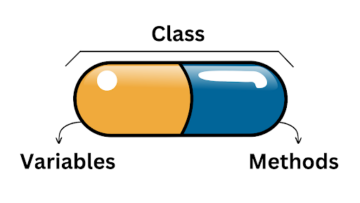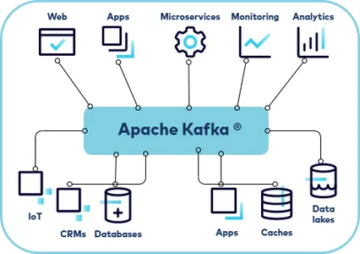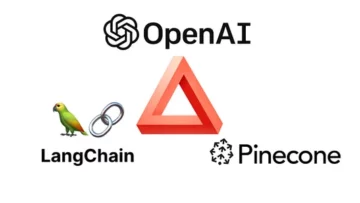Introduction
In an era where artificial intelligence (AI) shapes how we live, work, and play, the engines driving these sophisticated systems are becoming ever more crucial. These engines, known as AI accelerators, have rapidly evolved, transitioning from niche components to central figures in the computing landscape. They now power everything from chatbots and virtual assistants to complex predictive models influencing financial markets and healthcare diagnostics. This article explores Intel’s Gaudi 3 AI accelerator which sets new standards, proving to be 40% faster than Nvidia H100.
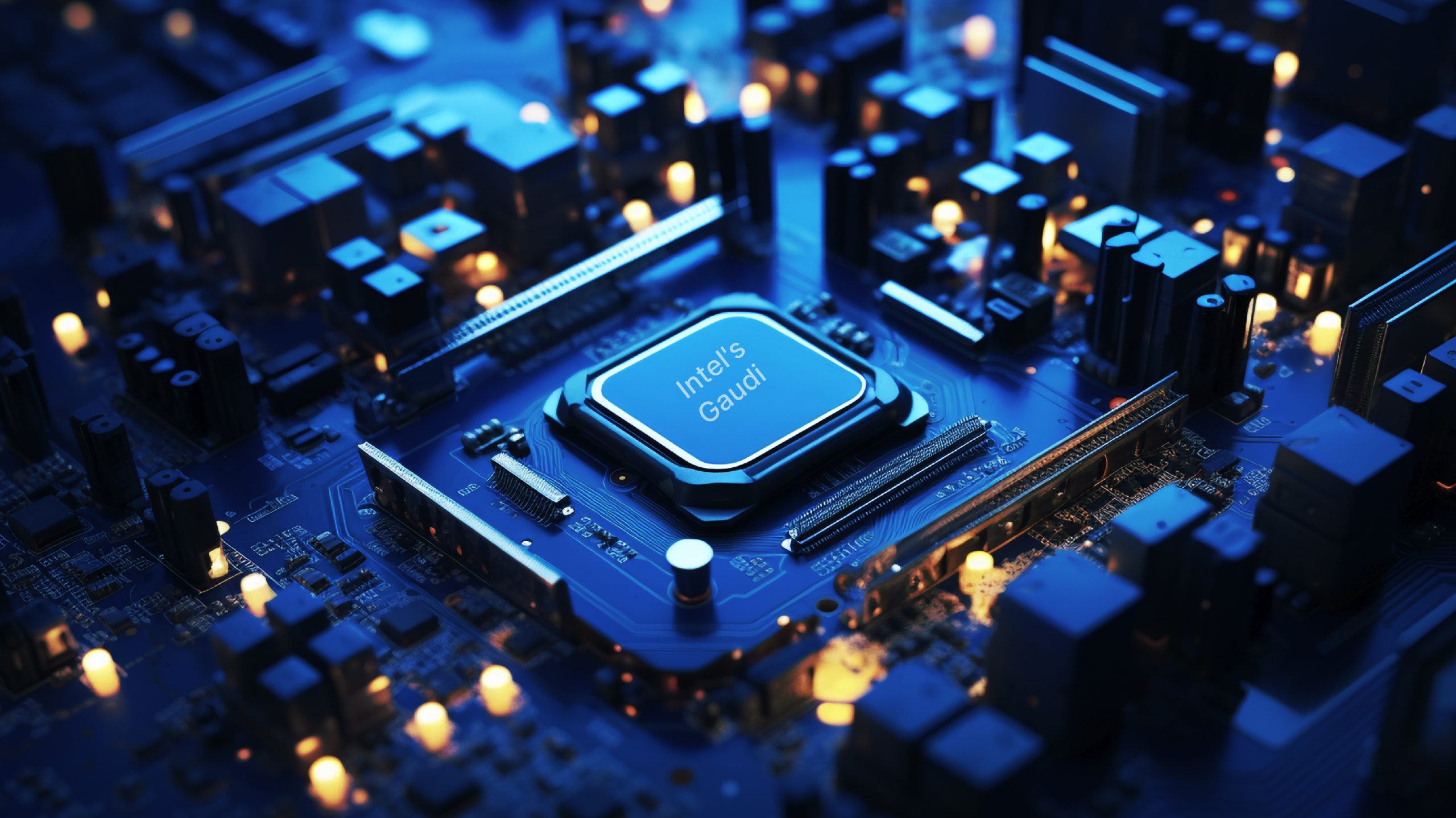
Table of Contents
The Evolving Landscape of AI Acceleration
The AI accelerator market drives modern technological innovation through dynamic competition and rapid advancements. Optimized hardware boosts the speed of essential AI tasks, meeting the rising demand for efficient accelerators across sectors. Major players like Nvidia dominate this competitive landscape, yet new innovators ensure constant evolution. AI accelerators offer specialized architectures that outperform traditional CPUs. This enables complex AI models to meet diverse applications from healthcare to finance, shaping the digital landscape and driving innovation.
The Advent of Intel Gaudi 3 AI Accelerator
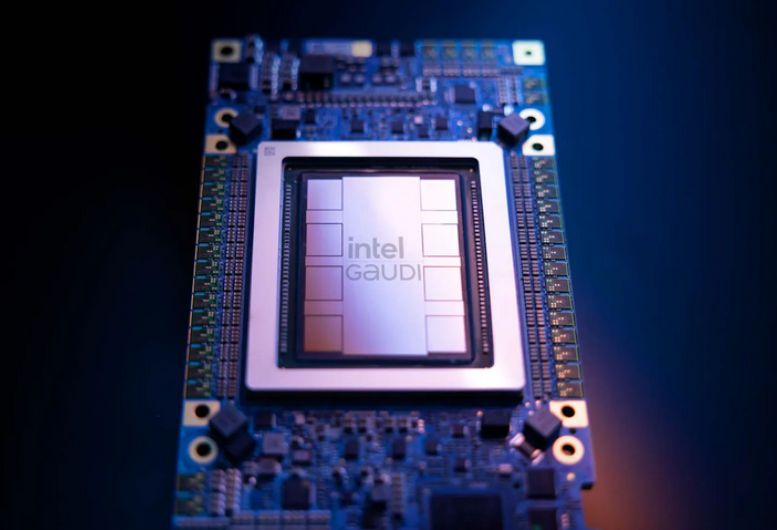
The introduction of the Intel Gaudi 3 AI Accelerator at the Intel Vision 2024 event marks a significant step in AI technology. It reflects Intel’s ongoing commitment to innovation and its strategic direction for the future. Gaudi 3, emerging as a key part of Intel’s plan, signifies more than just a new product. It represents Intel’s effort to push the boundaries of AI and ML computing. This positions Gaudi 3 as a critical component in challenging the current AI acceleration market leaders, offering a strong alternative.
Developed on an advanced 5nm process, Gaudi 3 combines power and efficiency to enhance AI acceleration significantly. It establishes new benchmarks in the industry and facilitates the development of innovative AI and machine learning applications.
Intel claims Gaudi 3 AI accelerator is typically 40% faster than Nvidia H100

The Gaudi 3 AI Accelerator, with its architectural advancements, marks a significant leap in AI processing capabilities. It has already claimed a 40% speed increase over its notable competitor, the Nvidia H100. This enhancement results from a meticulously enhanced layout that optimizes data flow and computation efficiency and allows for more effective handling of complex AI tasks.
The key to this impressive performance boost lies in the accelerator’s refined architecture, which facilitates quicker processing of AI and ML algorithms. This acceleration greatly reduces the time required for data analysis and model training. It also highlights Gaudi 3’s superior computational efficiency and power, setting a new benchmark for AI accelerators.
Features of Intel Gaudi 3 Accelerator

1. AI-Dedicated Compute Engine
The Intel Gaudi 3 accelerator, built for efficient large-scale AI computing, is manufactured on a 5 nanometer (nm) process, allowing for significant advancements over its predecessor. This shift to a more advanced manufacturing technology enables a denser and more efficient design, contributing significantly to the accelerator’s overall performance improvements.
It features a purpose-built AI-Dedicated Compute Engine comprising 64 AI-custom and programmable Tensor Processor Cores (TPCs) and eight Matrix Multiplication Engines (MMEs). Each MME can perform an impressive 64,000 parallel operations, enhancing computational efficiency and supporting multiple data types, including FP8 and BF16.
2. Memory Boost for LLM Capacity Requirements
With 128GB of HBMe2 memory capacity, 3.7TB of memory bandwidth, and 96MB of on-board SRAM, the Gaudi 3 accelerator provides ample memory for processing large GenAI datasets, resulting in increased workload performance and data center cost efficiency, particularly useful for serving large language and multimodal models.
3. Efficient System Scaling for Enterprise GenAI
Integrated with twenty-four 200Gb Ethernet ports, the Gaudi 3 accelerator facilitates flexible and open-standard networking, enabling efficient scaling to support large compute clusters. It eliminates vendor lock-in from proprietary networking fabrics and efficiently scales from a single node to thousands, meeting the expansive requirements of GenAI models.
4. Open Industry Software for Developer Productivity
Intel Gaudi software integrates the PyTorch framework and provides optimized Hugging Face community-based models This allows GenAI developers to operate at a high abstraction level for ease of use and productivity. It also enables ease of model porting across hardware types, enhancing developer productivity.
5. Gaudi 3 PCIe
The Gaudi 3 PCIe add-in card introduces a new form factor tailored for high efficiency with lower power consumption. It is ideal for workloads such as fine-tuning, inference, and retrieval-augmented generation (RAG). With a full-height form factor of 600 watts, 128GB memory capacity, and 3.7TB per second bandwidth, it offers high efficiency and performance.
Intel Gaudi 3 vs Gaudi 2: Performance Comparison
The Intel Gaudi 3 accelerator delivers significant improvements over its predecessor, Gaudi 2. With 4 times the AI compute power for BF16, a 1.5 times increase in memory bandwidth, and double the networking bandwidth, Gaudi 3 enhances AI training and inference on leading GenAI models. Gaudi 3 builds upon the proven performance and efficiency of Gaudi 2. It offers customers flexibility with open community-based software and industry-standard Ethernet networking, empowering them to scale their systems more effectively.
Furthermore, the shift to a 5nm manufacturing process in Gaudi 3 contributes significantly to its enhanced performance, allowing for a denser and more efficient design. This shift underscores Intel’s commitment to leveraging cutting-edge manufacturing processes to deliver superior AI acceleration solutions.
Power Efficiency and Cost-effectiveness
Gaudi 3’s design and architecture have been improved for lower power consumption, making it a more sustainable and economically viable option for extensive AI computations. This balance of power efficiency and computational capabilities positions Gaudi 3 as a compelling choice for organizations looking to maximize their AI investments while minimizing operational costs and environmental impact.
Implications for the AI Accelerator Market
Shifting Dynamics in AI Hardware
Gaudi 3’s entry marks a pivotal shift in AI hardware dynamics, challenging existing norms and pushing the envelope in performance and efficiency. This evolution prompts a reevaluation of strategies across the sector, influencing future developments and innovations in AI technologies.
Intel’s Market Position Post-Gaudi 3 Launch
The release of Gaudi 3 has significantly bolstered Intel’s standing in the AI accelerator market. This latest offering surely showcases Intel’s technological prowess. Moreover, it solidifies Intel’s position as a dominant player, poised to lead innovation and set fresh benchmarks in AI acceleration.
Potential Challenges for Nvidia and Response Strategies
Gaudi 3 is now posing potential challenges for Nvidia, prompting the need for strategic responses. Nvidia will be required to accelerate its innovation cycle to enhance its offerings and cost-effectiveness. Responsive strategies will be necessary for maintaining market leadership and meeting customer demands in a rapidly evolving landscape.
Use Cases and Applications
Gaudi 3’s impact extends beyond market dynamics, directly influencing a broad spectrum of use cases and applications.
1. Improving Large Language Models (LLMs)
Gaudi 3 presents significant enhancements in the domain of LLMs, giving them the computational prowess required for managing extensive datasets and intricate algorithms. This advancement assumes a pivotal role in propelling the field of natural language processing and generative AI, thereby fostering the evolution of more sophisticated and proficient AI systems.
2. Impact on AI Research and Development
The implications of Gaudi 3’s capabilities extend widely across AI research and development. It empowers researchers to tackle increasingly intricate problems and venture into uncharted territories in AI exploration. The accelerator’s efficiency and potency unlock opportunities for groundbreaking discoveries and innovations spanning various AI domains.
3. Applications in Healthcare, Finance, and More
Gaudi 3’s versatile capabilities find applications across multiple sectors, including healthcare, finance, and beyond. In healthcare, it can accelerate diagnostic algorithms and personalized medicine approaches. In finance, the AI accelerator enhances real-time fraud detection and algorithmic trading models. Across all fields, Gaudi 3’s impact is transformative, enabling more efficient and effective AI-driven solutions.
What’s the Launch Schedule for Gaudi 3?
The Intel Gaudi 3 accelerator is slated for release to original equipment manufacturers (OEMs) in the second quarter of 2024. Leading OEM partners, such as Dell Technologies, Hewlett Packard Enterprise, Lenovo, and Supermicro, are looking forward to its release. General availability of Intel’s latest AI accelerators is expected in the third quarter. Meanwhile, the Intel Gaudi 3 PCIe add-in card is anticipated to follow only by the last quarter of the year.
Developer and Industry Reception
The initial feedback from developers has been predominantly positive. Many highlight Gaudi 3’s enhanced capabilities and the potential to drive more efficient and powerful AI applications. Developers are particularly excited about the improved performance metrics. They also look forward to the possibilities these open up for advancing AI research and development across various fields.
Partner and OEM Support for Gaudi 3
Intel has garnered substantial support from partners and Original Equipment Manufacturers (OEMs) for Gaudi 3. This reflects confidence in the accelerator’s market potential and technological advancements. This collaboration spans various sectors, indicating widespread interest and applicability of the AI accelerator in addressing complex computational needs across industries.
Conclusion
Intel’s Gaudi 3 AI Accelerator is a significant step forward in artificial intelligence. It showcases substantial enhancements in processing power, memory bandwidth, and energy efficiency. The widespread acclaim and appreciation from developers and partnership backing highlight its transformative potential. Intel’s everlasting commitment to pushing the boundaries of AI acceleration is evident with Gaudi 3. It serves as a testament to its pivotal role in shaping the next generation of AI applications.
- SEO Powered Content & PR Distribution. Get Amplified Today.
- PlatoData.Network Vertical Generative Ai. Empower Yourself. Access Here.
- PlatoAiStream. Web3 Intelligence. Knowledge Amplified. Access Here.
- PlatoESG. Carbon, CleanTech, Energy, Environment, Solar, Waste Management. Access Here.
- PlatoHealth. Biotech and Clinical Trials Intelligence. Access Here.
- Source: https://www.analyticsvidhya.com/blog/2024/04/intel-gaudi-setting-new-standards-with-faster-ai-acceleration-than-nvidia/
- :has
- :is
- :where
- $UP
- 000
- 1
- 2%
- 2024
- 4
- 5
- a
- About
- abstraction
- accelerate
- acceleration
- accelerator
- accelerators
- across
- addressing
- advanced
- advancement
- advancements
- advancing
- advent
- AI
- ai investments
- AI models
- ai research
- AI systems
- AI training
- algorithmic
- algorithmic trading
- algorithms
- All
- Allowing
- allows
- already
- also
- alternative
- an
- analysis
- and
- Anticipated
- applications
- appreciation
- approaches
- architectural
- architecture
- architectures
- ARE
- article
- artificial
- artificial intelligence
- AS
- assumes
- At
- availability
- backing
- Balance
- Bandwidth
- BE
- becoming
- been
- Benchmark
- benchmarks
- Beyond
- bolstered
- boost
- boosts
- boundaries
- broad
- builds
- built
- by
- CAN
- capabilities
- Capacity
- card
- cases
- Center
- central
- challenges
- challenging
- choice
- claimed
- claims
- collaboration
- combines
- commitment
- Community-based
- compelling
- competition
- competitive
- competitor
- complex
- component
- components
- comprising
- computation
- computational
- computations
- Compute
- computing
- confidence
- constant
- consumption
- contributes
- contributing
- Cost
- Costs
- critical
- crucial
- Current
- customer
- Customers
- cutting-edge
- cycle
- data
- data analysis
- Data Center
- datasets
- deliver
- delivers
- Dell
- Demand
- demands
- Design
- Developer
- developers
- Development
- developments
- diagnostic
- Diagnostics
- digital
- direction
- directly
- diverse
- domain
- domains
- dominant
- dominate
- double
- drive
- drives
- driving
- dynamic
- dynamics
- each
- ease
- ease of use
- economically
- Effective
- effectively
- efficiency
- efficient
- efficiently
- effort
- eight
- eliminates
- emerging
- empowering
- empowers
- enables
- enabling
- energy
- energy efficiency
- Engine
- Engines
- enhance
- enhanced
- enhancement
- enhancements
- Enhances
- enhancing
- ensure
- Enterprise
- entry
- envelope
- environmental
- equipment
- Era
- essential
- establishes
- Event
- EVER
- everything
- evident
- evolution
- evolved
- evolving
- excited
- existing
- expansive
- expected
- exploration
- explores
- extend
- extends
- extensive
- fabrics
- Face
- facilitates
- factor
- faster
- Features
- feedback
- field
- Fields
- Figures
- finance
- financial
- Find
- Flexibility
- flexible
- flow
- follow
- For
- form
- Forward
- fostering
- Framework
- fresh
- from
- future
- future developments
- garnered
- genai
- General
- generation
- Giving
- greatly
- groundbreaking
- Handling
- Hardware
- Have
- healthcare
- High
- Highlight
- highlights
- How
- HTTPS
- ideal
- Impact
- implications
- impressive
- improved
- improvements
- improving
- in
- Including
- Increase
- increased
- increasingly
- indicating
- industries
- industry
- influencing
- initial
- Innovation
- innovations
- innovative
- innovators
- Integrates
- Intel
- Intelligence
- interest
- into
- intricate
- Introduces
- Introduction
- Investments
- IT
- ITS
- jpg
- just
- Key
- known
- landscape
- language
- large
- large-scale
- Last
- latest
- launch
- Layout
- lead
- leaders
- Leadership
- leading
- Leap
- Lenovo
- Level
- leveraging
- lies
- like
- live
- llm
- Look
- looking
- lower
- maintaining
- major
- Making
- managing
- manufactured
- Manufacturers
- manufacturing
- many
- Market
- Markets
- Matrix
- max-width
- Maximize
- Meanwhile
- medicine
- Meet
- meeting
- Memory
- meticulously
- Metrics
- minimizing
- model
- models
- Modern
- more
- more efficient
- Moreover
- multiple
- multiplication
- necessary
- Need
- needs
- networking
- New
- new product
- next
- niche
- node
- norms
- notable
- now
- Nvidia
- of
- offer
- offering
- Offerings
- Offers
- on
- ongoing
- only
- open
- operate
- operational
- Operations
- opportunities
- optimized
- Optimizes
- Option
- organizations
- original
- Outperform
- over
- overall
- Parallel
- part
- particularly
- partners
- Partnership
- per
- perform
- performance
- Personalized
- pivotal
- plan
- plato
- Plato Data Intelligence
- PlatoData
- Play
- player
- players
- poised
- ports
- posing
- position
- positions
- positive
- possibilities
- potency
- potential
- power
- powerful
- predecessor
- predictive
- predominantly
- presents
- problems
- process
- processes
- processing
- Processing Power
- Processor
- Product
- productivity
- programmable
- prompts
- propelling
- proprietary
- proven
- provides
- proving
- prowess
- Push
- Pushing
- pytorch
- Quarter
- quicker
- rag
- rapid
- rapidly
- real-time
- reduces
- refined
- reflects
- release
- represents
- required
- Requirements
- research
- research and development
- researchers
- response
- responses
- responsive
- resulting
- Results
- rising
- Role
- s
- Scale
- scales
- scaling
- schedule
- Second
- second quarter
- sector
- Sectors
- serves
- serving
- set
- Sets
- setting
- shapes
- shaping
- shift
- showcases
- significant
- significantly
- signifies
- single
- Software
- solidifies
- Solutions
- sophisticated
- spanning
- spans
- specialized
- Spectrum
- speed
- standards
- standing
- Step
- Strategic
- strategies
- strong
- substantial
- such
- superior
- support
- Supporting
- surely
- sustainable
- system
- Systems
- tackle
- tailored
- tasks
- technological
- Technologies
- Technology
- territories
- testament
- than
- that
- The
- The Future
- their
- Them
- thereby
- These
- they
- Third
- this
- thousands
- Through
- time
- times
- to
- Trading
- traditional
- Training
- transformative
- transitioning
- types
- typically
- uncharted
- underscores
- unlock
- upon
- use
- useful
- various
- vendor
- venture
- versatile
- viable
- vision
- vs
- watts
- we
- which
- while
- widely
- widespread
- will
- with
- Work
- year
- yet
- zephyrnet

